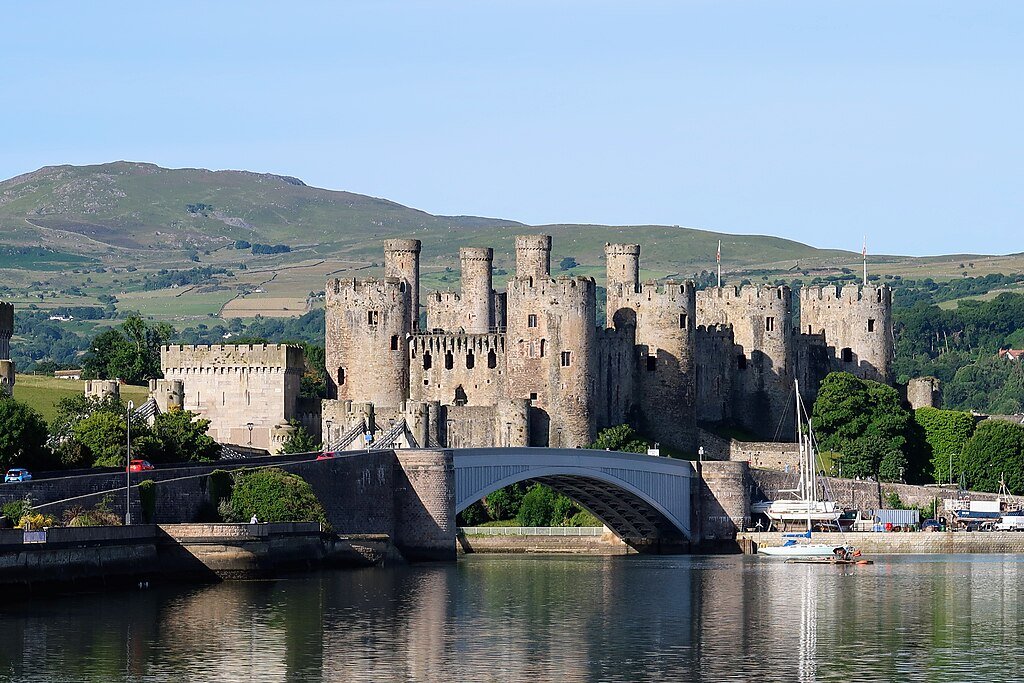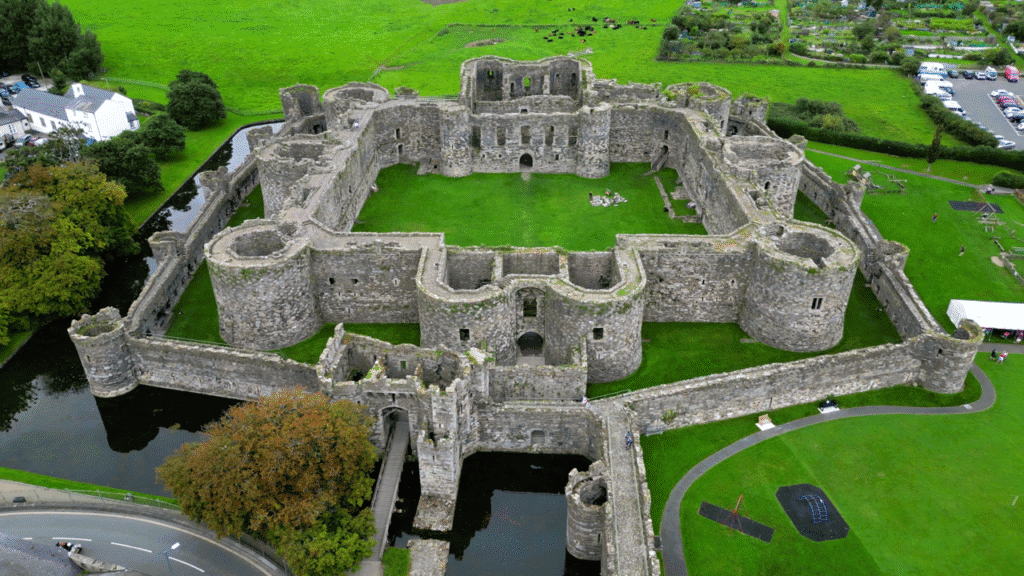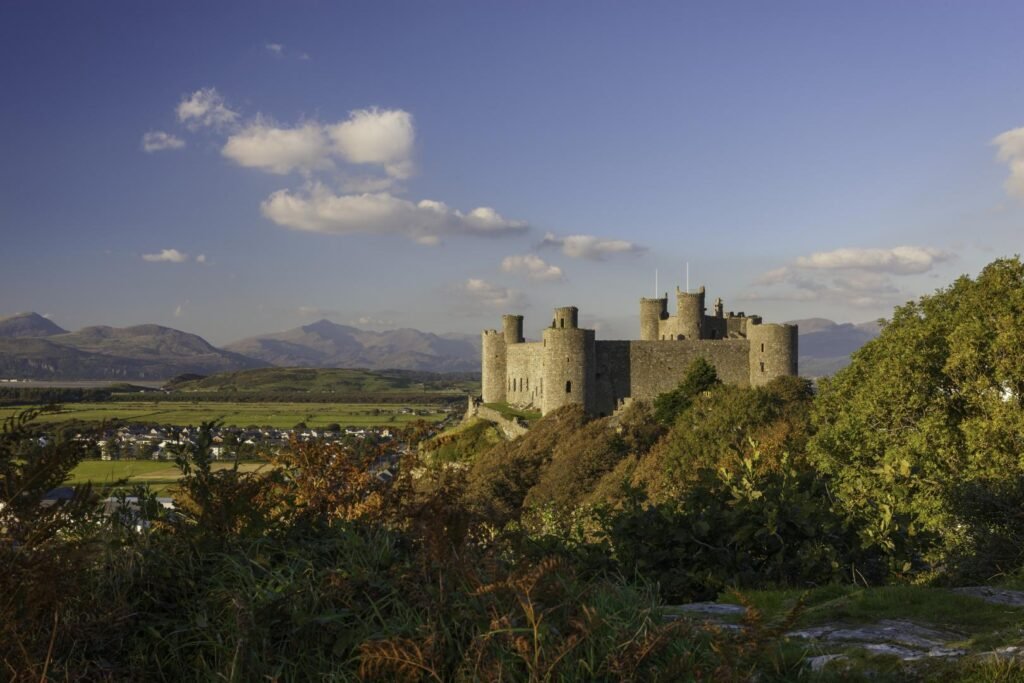
Nestled on the rugged coast of North Wales, Conwy Castle stands as a towering testament to the UK’s rich medieval history. Its imposing stone walls, eight mighty towers, and breathtaking views over the Conwy Estuary make it a must-visit for anyone exploring the United Kingdom. Built in the late 13th century by King Edward I, this UNESCO World Heritage Site is more than just a castle.
It is a portal to the past, a family-friendly adventure, and a perfect base for discovering the cultural and natural wonders of North Wales. Whether you’re a history buff, a couple seeking a romantic getaway, or a family looking for an engaging day out, Conwy Castle offers something for everyone. Let’s dive into why this medieval masterpiece should be at the top of your UK travel list and how it fits into the broader tapestry of British heritage.
A Brief History of Conwy Castle
Conwy Castle’s story begins in 1283, when King Edward I of England embarked on his ambitious campaign to conquer Wales. Determined to secure his grip on the region, he commissioned a series of fortresses known as the “Iron Ring” of castles, including Conwy, Caernarfon, Harlech, and Beaumaris. Conwy Castle, designed by master architect James of St. George, was constructed in just four years, a remarkable feat for its time, costing an estimated £15,000, a colossal sum in the 13th century. Built on a rocky ridge overlooking the River Conwy, the castle was both a military stronghold and a symbol of English dominance.
Over the centuries, Conwy Castle witnessed dramatic moments in history. It withstood a siege by Welsh rebel Madog ap Llywelyn in 1294–95, served as a refuge for King Richard II in 1399, and was briefly captured by Welsh forces led by the Tudurrika brothers in 1401. During the English Civil War, it held out for King Charles I until 1646, only to be partially dismantled by Parliament to prevent future rebellions. By the 18th century, the castle had become a picturesque ruin, attracting artists like J.M.W. Turner. Today, managed by Cadw, it welcomes over 180,000 visitors annually, drawn to its well-preserved medieval architecture and captivating tales of conquest and rebellion.
Why Conwy Castle Stands Out
Conwy Castle is one of the finest examples of late 13th-century military architecture in Europe, earning its UNESCO World Heritage status alongside the town’s remarkably intact walls. Its eight massive towers, two barbicans, and a postern gate by the river showcase its defensive prowess, while the inner ward’s royal apartments offer a glimpse into medieval life. The castle’s strategic location on the Conwy Estuary, with Snowdonia’s mountains as a backdrop, adds to its allure, making it a photographer’s dream.
Key Facts and Figures
- Construction Period: 1283–1287
- Cost: Approximately £15,000 (equivalent to millions today)
- Towers: 8, each offering panoramic views
- Walls: Part of a 1.3km fortified circuit around Conwy town
- Annual Visitors: Over 180,000
- Maintenance Costs: Around £50,000 per year
- UNESCO Status: Designated in 1986 as part of the Castles and Town Walls of King Edward in Gwynedd
- Historical Events: Survived sieges, served as a royal refuge, and was a prison under Henry VIII
The castle’s popularity has surged in recent years, reflecting a growing interest in historical tourism across the UK. North Wales, with its concentration of Edwardian castles, is a hotspot for visitors, with Conwy often ranking among the top due to its accessibility and well-preserved state. Families are particularly drawn to its interactive exhibits and open spaces, while couples and solo travellers appreciate the romantic and evocative atmosphere.
Major Attractions Around Conwy Castle
Conwy Castle is the centrepiece of a town brimming with historical and cultural treasures. Here are some must-visit attractions nearby:
- Conwy Town Walls: These 1.3km-long medieval walls, built concurrently with the castle, feature 22 towers and offer stunning views of the town, castle, and estuary. Walking the walls takes about 20 minutes and is free, though some sections close in the evening.
- Conwy Suspension Bridge: Designed by Thomas Telford in 1826, this elegant bridge blends seamlessly with the castle’s aesthetic. Managed by the National Trust, it’s free to walk across and features a toll house with a replica price list.
- Plas Mawr: A beautifully restored Elizabethan townhouse from the 16th century, showcasing intricate plasterwork and vibrant interiors. Audio tours bring the home’s history to life, and it’s free for Cadw members.
- Smallest House in Great Britain: Located on Conwy’s quay, this tiny red house (183cm wide, 310cm tall) is a quirky attraction. For £1.50, visitors can explore its two cramped rooms, once home to a 6ft3” fisherman.
- Bodnant Gardens: An 80-acre National Trust site with global plant collections and the famous Laburnum Arch, best seen in late May. It’s a short drive from Conwy and ideal for nature lovers.
- Conwy Water Gardens and Dutch Pancake House: A family-friendly nature trail with otters and a unique restaurant offering over 60 pancake varieties.
- Royal Cambrian Academy of Art: A gallery showcasing contemporary Welsh art, with changing exhibitions and a shop for unique souvenirs. Closed Sundays and Mondays.
- Aberconwy House: A 14th-century merchant’s house offering insights into medieval life, perfect for history enthusiasts.
These attractions make Conwy a microcosm of the UK’s diverse offerings, from medieval fortresses to Victorian engineering and natural beauty. The region’s appeal mirrors the UK’s broader trend of blending history with accessible, family-friendly experiences.
Travel Tips and Practical Advice
Visiting Conwy Castle is straightforward, but a bit of planning ensures a seamless experience. Here’s what you need to know:
- Opening Times: The castle is open year-round, typically from 9:30 AM to 5:00 PM (shorter hours in winter). Check Cadw’s website for seasonal variations and special event closures.
- Tickets: Book online to save time and possibly secure discounts. Family tickets or combo deals with Plas Mawr and the town walls offer great value. Cadw members enter free; English Heritage members get half-price admission.
- Accessibility: The castle’s grounds are mostly accessible, but the towers involve steep spiral staircases, which may challenge those with mobility issues. Families with strollers should opt for models suited to uneven terrain.
- Family-Friendliness: Interactive displays, open spaces, and historical reenactments make the castle engaging for kids. The visitor centre provides maps and audio guides to enhance the experience.
- Best Time to Visit: Spring (April–June) and autumn (September–October) offer mild weather and fewer crowds. Summer brings vibrant events but busier conditions; arrive early to beat the rush. Winter visits are quieter, but check for reduced hours.
- Getting There: Conwy is easily accessible via the A55 Expressway from Chester or Liverpool. Conwy Station, a four-minute walk from the castle, offers regular train services. Buses connect nearby towns, and parking is available near the castle, though spaces fill up during peak seasons. Manchester Airport (120km) and Liverpool John Lennon Airport (114km) are the closest major airports.
- Budget Tip: Visit in November for lower hotel rates, freeing up funds for tours or dining.
Wear sturdy footwear for the castle’s cobblestone paths and stairs, and consider packing a picnic, as on-site food options are limited. Conwy’s quay is perfect for fish and chips with a view.
Suggested Itineraries
Conwy Castle is a versatile anchor for various travel routes, catering to different interests and group types. Here are three themed itineraries to explore North Wales:
1. Medieval History Tour (2 Days)
- Day 1: Start with a morning guided tour of Conwy Castle, exploring the Great Hall, King’s Chamber, and tower views. After lunch at Watson’s Bistro, walk the town walls and visit Plas Mawr for its Elizabethan charm. End the day with dinner at The Erskine Arms, savouring Welsh dishes.
- Day 2: Drive to Caernarfon Castle (30 minutes), another Edwardian masterpiece, and explore its royal history. Head to Beaumaris Castle (40 minutes from Conwy) for its symmetrical design, then return to Conwy for a cosy evening at L’s Coffee and Books.
2. Family Adventure (1 Day)
- Morning: Explore Conwy Castle with audio guides, letting kids climb towers and imagine medieval battles. Grab fish and chips on the quay for lunch.
- Afternoon: Visit Conwy Water Gardens for otters and pancakes at the Dutch Pancake House. End with the Smallest House for a quick, fun stop.
- Evening: Dine at Castle Hotel Restaurant for family-friendly meals in a historic setting.
3. Romantic Coastal Getaway (3 Days)
- Day 1: Stroll hand-in-hand through Conwy Castle’s romantic ruins, followed by a walk across the Telford Suspension Bridge. Dine at Alfredo’s Restaurant for Italian cuisine.
- Day 2: Visit Bodnant Gardens for its romantic Laburnum Arch and scenic trails. Enjoy a picnic from Bodnant Food Centre, then explore Llandudno’s Victorian pier and Great Orme tramway.
- Day 3: Take a City Sightseeing bus tour to Llandudno and Conwy, hopping off to explore key sites. End with a sunset dinner at Signatures Restaurant.
These itineraries reflect the UK’s appeal as a destination where history, nature, and culture intertwine, offering endless possibilities for tailored adventures.
Where to Eat and Stay
Dining
Conwy’s culinary scene blends traditional Welsh flavours with international flair:
- Castle Hotel Restaurant: Offers a mix of modern and classic dishes in a 300-year-old coaching inn, steps from the castle.
- The Erskine Arms: A cosy pub with Welsh and global cuisine, perfect for a hearty meal.
- Watson’s Bistro: Known for fresh, local ingredients and relaxed dining.
- L’s Coffee and Books: Ideal for a quick coffee and light bites in a book-filled setting.
- Alfredo’s Restaurant: A local favourite for Italian pasta and pizzas.
- Dutch Pancake House: Unique for its 60+ pancake varieties, from sweet to savoury.
- Bodnant Food Centre: Offers Welsh specialities like cheeses and cakes, with two restaurants (The Furnace and Hayloft Bar & Grill) for sit-down meals.
Accommodation
Conwy and nearby areas offer charming stays:
- Castle Hotel: A historic inn with elegant rooms, free parking, and WiFi, close to the castle. Book via Booking.com for convenience.
- Llandudno Boutique Hotels: Coastal charm with Victorian flair, a short drive away. Try for sea views and proximity to the Great Orme.
- Conwy B&Bs: Quaint, family-run options with hearty breakfasts, perfect for a cosy stay.
- Airbnb Rentals: Private rooms or apartments for a home-like feel, often with local host tips.
- Hostels: Budget-friendly with social vibes, ideal for solo travellers.
For extended stays, consider renting a car to explore Snowdonia or Anglesey at your own pace.
Seasonal Events and Special Experiences
Conwy Castle and its surroundings come alive with events that enhance its historical charm:
- Conwy Medieval Festival (Summer): Reenactments, jousting, and craft stalls bring the Middle Ages to life.
- Conwy Food Festival (July): Local produce, street food, and live music on the quay.
- Ghost Tours (Year-Round): Evening tours weaving spooky tales of the castle and town, perfect for thrill-seekers.
- Bodnant Gardens Events (Spring/Summer): Flower shows and garden workshops, especially vibrant during the Laburnum Arch bloom.
- Conwy Arts Festival (Autumn): Exhibitions and workshops at the Royal Cambrian Academy of Art.
These events mirror the UK’s love for celebrating its heritage, from medieval fairs to modern cultural festivals, making Conwy a year-round destination.
Conwy Castle in the UK Travel Scene
Conwy Castle is a microcosm of what makes the UK a top travel destination: a blend of history, accessibility, and scenic beauty. Its appeal to families, couples, and solo travellers reflects broader trends in UK tourism, where visitors seek immersive experiences that connect them to the past. From the castles of North Wales to the museums of London and the trails of the Lake District, the UK offers a tapestry of stories waiting to be explored. Conwy Castle, with its medieval grandeur and vibrant surroundings, is a perfect starting point for your British adventure. Plan your visit, step through its ancient gates, and let history guide your journey.


